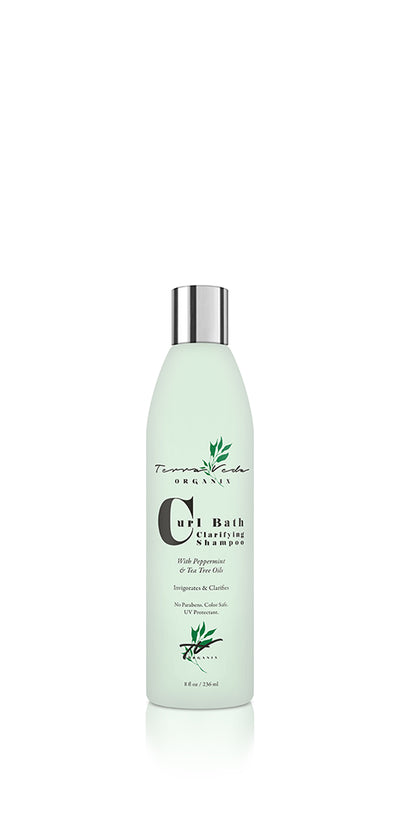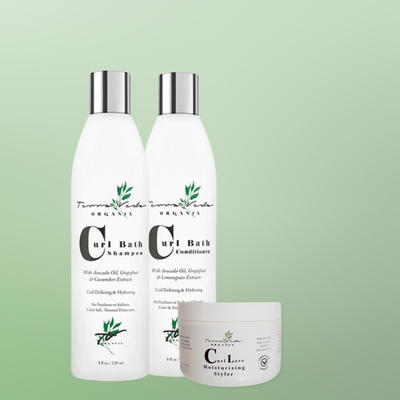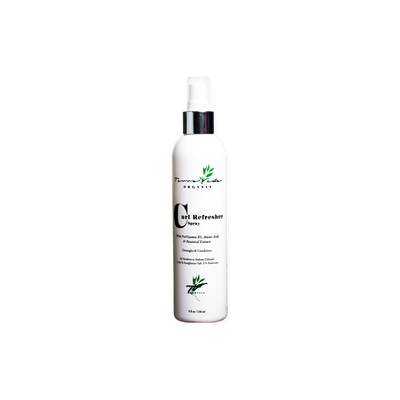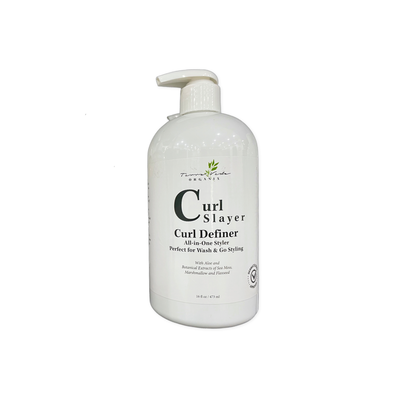All About Hair Porosity
Porosity is moving to the forefront of the hair typing conversation, and rightfully so. With the focus of healthy hair being moisture, understanding your hair’s porosity and the products that will cater to its needs are important. There are three porosity levels: low, medium (normal), and high.
Low porosity hair has a cuticle that is tightly bound, making it challenging for moisture and chemicals to effectively penetrate and be released.
High porosity has gaps and holes in the cuticle, which allow it to quickly absorb moisture and chemicals while also quickly releasing them. High porosity hair can be a result of genetics, over manipulation, heat usage, or chemical processing.
Medium porosity is the easiest to manage and is the happy medium.
There are multiple ways to check your hair’s porosity.
Cup
Some suggest placing a clean strand of hair into a cup of water and if it floats, then it has low porosity. If the strand sinks, then it has high porosity. This test can be challenging as the products you use can be the variable that make your results inconsistent. So, do this test on freshly washed Product free hair.
Click this Link to: Take Hair Porosity Test
Another great means to learning your hair’s porosity is while washing it.
Absorbing Water
If your hair takes a while fully saturate with water before you start washing, then you probably have low porosity hair. It takes some Low porosity hair types 2-3 min. before their hair is fully saturated with water. So, that is an indication that you have low porosity hair.
If your hair immediately absorbs the water, then you probably have high porosity hair.
Here’s another way to observe your hair’s porosity.
Releasing Water
If your hair takes hours or days to dry after washing it, then you probably have low porosity hair. If your hair dries in a matter of minutes, then you may have high porosity hair. Do butters leave your hair oily? You probably have low porosity hair. Are lotions and milks not sufficient for maintaining moisture? You probably have high porosity curls and coils.
Important things to note
With the washing and drying test, it is important to consider your hair’s thickness/density. If you have very dense hair, then it will naturally take longer to dry, as it is more compact in comparison to low density hair. Also, fine strands tend to not respond well to thicker products in comparison to coarse strands.
Porosity Classifications
The individual scales of the cuticle overlap one another like the feathers of a bird or scales on a fish. This amazing system of flexible and responsive scales allows diffusion of oils and moisture into and out of the hair as needed. Porosity is determined by how tightly the cuticle scales adhere to the surface of the hair shaft and also by how thoroughly adjacent scales overlap one another.
Low Porosity
Hair described as having low porosity is characterized by a very tightly bound cuticle layer, where the individual cuticle scales lie flat and overlap one another. Low porosity hair is often quite shiny, especially if it is a darker color. Overall this type of hair is considered to be quite healthy. If your hair repels water when you attempt to wet it, that is a good indication that it has low porosity. It can be quite difficult to process, because it resists penetration of the chemicals being used.
Low porosity hair is more prone to an excessive accumulation of protein if deep conditioning products are used and will feel very stiff and straw-like. It requires products rich in moisture and emollients and also benefits most from products that contain humectants, which attract moisture to the hair and hold it there. If hair with very few or very small openings becomes dry for some reason, it can be more difficult to restore proper moisture balance to it. In this case, a deep conditioning treatment with moderate heat would be a good way to ensure the cuticle is sufficiently opened up to allow moisture to enter into the cortex.
Normal Porosity
Hair possessing average porosity will generally require the least amount of maintenance. It allows moisture to pass into the cortex as needed, but resists permitting too much water to penetrate. Repeated works by various research groups have found that healthy hair of average porosity can absorb water up to a maximum of 31.1% by weight. Normal porosity hair has a tendency to hold styles well. Perming or coloring can be done in a predictable manner, following the usual guidelines of the product. However, one must note that these processes will damage the hair and increase its porosity over time. An occasional deep conditioning treatment with a protein-containing product will be of benefit, but proteins should not be included in the daily regimen.
High porosity is an unfortunate result of damage to the hair. Chemical processes, harsh treatment, and environmental exposure are all responsible for causing cumulative, irreversible damage to the cuticle layer. This damage creates gaps and holes in the surface of the hair shaft—essentially chinks in its armor. Hair with this type of uneven, pitted and rough surface is prone to damage from more and more sources, resulting in a cascade of effects that culminate in unmanageable and unlovely locks.
Hair with a great deal of porosity has been found to be capable of absorbing significantly higher amounts of water than hair or normal or low porosity (up to 55%, in contrast with 31.1% for healthy hair). Excessive absorption of water from the atmosphere causes frizz and tangling on humid days. Total immersion of high porosity hair during bathing, swimming, or shampooing can lead to significant breakage due to loss of elasticity from the sheer weight of the water absorbed. It also takes on color much more quickly and in higher concentrations than normal porosity hair when undergoing a chemical color process.
People with high porosity hair should use products with lots of moisturizers and emollients and also use anti-humectants in high heat and humidity climates in order to seal their cuticle against excessive absorption of moisture from the air. Protein treatments can also be very helpful for patching some of the holes in the hair, but one must follow up with moisturizing products in order to avoid a stiff texture. Rinsing with a slightly acidic rinse will help flatten and seal the cuticle. Some clear color applications have proteins in them that can patch the gaps in your hair also.







